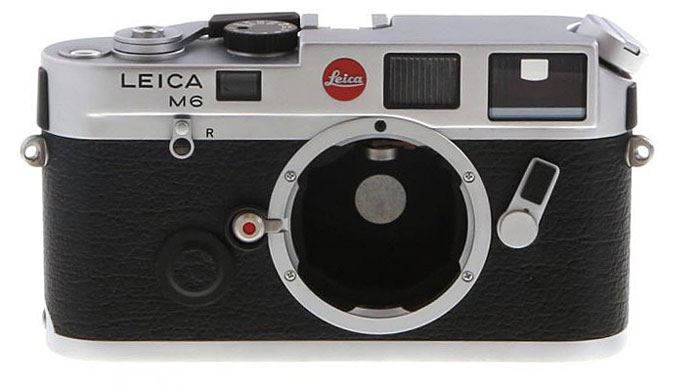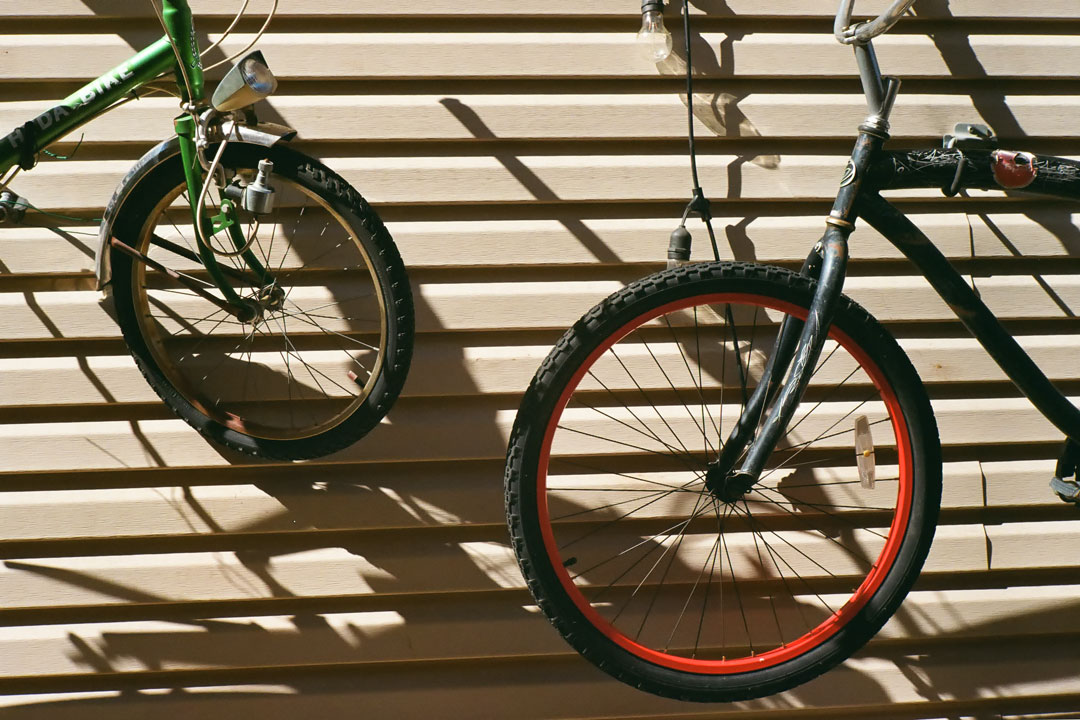Today’s Post by Joe Farace
One of my hobbies, although I’m not sure you could really call it that, is fountain pens, which are enjoying a resurgence much like film photography is because of what some people are calling analog appreciation. And nothing says analog appreciation more than a Leica rangefinder camera…
 The Leica M6 is a 35mm rangefinder film camera that was manufactured from 1984 to 2002. The M6 has the profile of the classic Leica M3 and M4 models. It has an off-the-shutter light meter that displays red LED arrows in the viewfinder, unlike the red/green ones found in the Canon AL-1; they’re bigger too. Approximately 132,000 Leica M6’s were produced, making it the second highest production run of any Leica after the M3.
The Leica M6 is a 35mm rangefinder film camera that was manufactured from 1984 to 2002. The M6 has the profile of the classic Leica M3 and M4 models. It has an off-the-shutter light meter that displays red LED arrows in the viewfinder, unlike the red/green ones found in the Canon AL-1; they’re bigger too. Approximately 132,000 Leica M6’s were produced, making it the second highest production run of any Leica after the M3.
The top and bottom plates are made from magnesium alloy instead of the machined brass used on the M3 and M4. You can shoot the M6 at any shutter speed from 1/1000 of a second to one second, or bulb mode, all mechanical and without requiring batteries.

How I Made this Shot: My first photograph with any new camera is usually of the gazebo in O’Brien Park in Parker, Colorado—it’s a good luck thing. I’ve had the Leica M6 TTL for many years (20?) but haven’t shot it in, at least, the eleven years we’ve been living here on Daisy Hill. Yet…unlike the Hasselblad XPan that choked after similar years of dis-use, the M6 “took a lickin’ and kept on tickin.'”
Both M6 and M6 TTL models are mostly mechanical cameras and all the camera’s functions except the light meter work without batteries. The M7, on the other hand, incorporates automatic aperture-priority shooting and requires batteries to fully operate. The M6 uses two LR44 batteries that are tucked away beneath a circular cap on the camera’s front but only to power the camera’s internal light meter. If the batteries fade? You can always make photographs using a handheld meter or the “Sunny 16” rule.
My camera is an M6 TTL (1998 – 2002,) a model that replaced the M6 and was originally available in 0.72 and 0.85 viewfinder versions. In 2000 a 0.58 version of the M6 TTL was added to the line. According to my camera’s serial number, it was made in 2001. The lower magnification viewfinder is supposed to make it easier to see the frame lines for the 28mm lens (that I don’t own) especially when wearing glasses. I tried wearing my glasses for some of the shots I made during my solo photo walk and while the process of shooting was somewhat slower than not wearing them, it was not overly inconvenient.
One of the key differences between M6 and M6 TTL models is its Through-The-Lens flash capability with dedicated flash units, such as Leica’s SF-20 that I own but have never used. The added electronics required for this feature increased the height of the top plate by two millimeters.
Leicaphiles will notice that the M6 TTL’s shutter dial is reversed from previous models, turning in the same direction as the LED arrows in the viewfinder. This feature was continued with the M7, M8, and M9, but not the MP, which returned to the older, smaller diameter, opposite direction shutter speed dial.
 I took the M6 TTL with a 50mm f/2 Summicron-M lens for a solo photo walk in downtown Parker, Colorado. I haven’t shot the camera in, at least, 10 years but put in some new Energizer batteries—they’re less than two bucks each—and loaded the camera with some fresh (02/24) Kodak UltraMax 400 film. The Leica M6 TTL has no DX Coding support. I had planned to shoot some expired Fuji Pro 160S but it didn’t seem right to treat a Leica like that. Look for a review of UltraMax 400 on the next Film Friday.
I took the M6 TTL with a 50mm f/2 Summicron-M lens for a solo photo walk in downtown Parker, Colorado. I haven’t shot the camera in, at least, 10 years but put in some new Energizer batteries—they’re less than two bucks each—and loaded the camera with some fresh (02/24) Kodak UltraMax 400 film. The Leica M6 TTL has no DX Coding support. I had planned to shoot some expired Fuji Pro 160S but it didn’t seem right to treat a Leica like that. Look for a review of UltraMax 400 on the next Film Friday.
The camera’s build quality is impressive, as you might expect, and everything works smoothly and precisely, all those years of hibernating inside a LowePro camera bag notwithstanding. Much like a Porsche, the camera was built to a standard not a price. Unlike Mary’s Subaru, which was built to a price point. And much as the Porsche has its quirks, such as its left-hand ignition switch and non-standard shift pattern, the M6’s quirky bottom film loading procedure is awkward at best. You will ultimately become comfortable with it, but it will never be a fast process.
At 20.6 oz the M6 body feels heavy but when used with decidedly the non-luxurious strap that’s included seems well balanced when hung around your neck. By comparison a Panasonic Lumix G9 weighs 23.21 oz. During my photo walk I quickly got used to the camera’s heft and luxuriated in the shear joy of operating the M6. I can only tell you that all of the legends and mystique about the Leica rangefinder cameras are true.
If you would like to send me a roll of film to review or any other stuff that could be used for these posts and my videos you can mail it to: Joe Farace, PO BOX 2081, PARKER, CO 80134